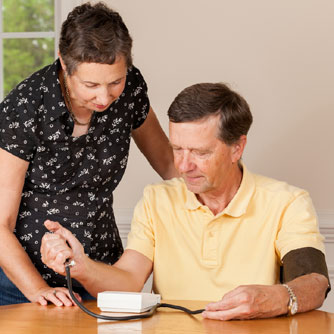Home blood pressure monitoring is an effective way to identify masked hypertension, a condition that affects 10% of the population but often goes untreated.
Masked hypertension is a condition where a person has normal or high-normal blood pressure readings at the doctor’s office, but s/he actually has high blood pressure at home or at work. The condition affects an estimated 10% of the population but often goes untreated – placing the person at-risk of a cardiovascular incident. Jan Staessen, from the University of Leuven (Belgium), and colleagues analyzed data from five previous studies of home-monitored blood pressure completed on a total of 5,008 individuals residing in Finland, Japan, Greece and Uruguay. Blood pressure readings with a top number below 120 and a bottom number below 80 were considered “optimal.” Normal blood pressure was a reading of 120-129/80-84, “high-normal” was 130-139/85-89, mild hypertension was 140-159/90-99 and severe hypertension was a top number of 160 or higher and a bottom number of 100 or more. The researchers considered a home reading of 130/85 or above to indicate masked hypertension when the person did not meet the criteria for high blood pressure at the doctor’s office. By that standard, they found that 5% of those with “optimal” blood pressure at the clinic, 18.4% with “normal” clinic readings and 30.4% with “high-normal” clinic readings had masked hypertension at home. During a median 8.3 years of follow-up, participants with masked hypertension had between 2.24 and 2.65 times the risk for cardiovascular events when compared to those with true normal blood pressure. The study authors submit that: “Our study identified a novel indication for [home blood pressure monitoring], which, in view of its low cost and the increased availability of electronic communication, might be globally applicable, even in remote areas or in low-resource settings.”
-
Kei Asayama, Lutgarde Thijs, Jana Brguljan-Hitij, Teemu J. Niiranen, Atsushi Hozawa, Jan A. Staessen, et al; for the International Database of Home Blood Pressure in Relation to Cardiovascular Outcome (IDHOCO) investigators. “Risk Stratification by Self-Measured Home Blood Pressure across Categories of Conventional Blood Pressure: A Participant-Level Meta-Analysis.” PLOS Medicine 10.1371, 21 Jan 2014.


